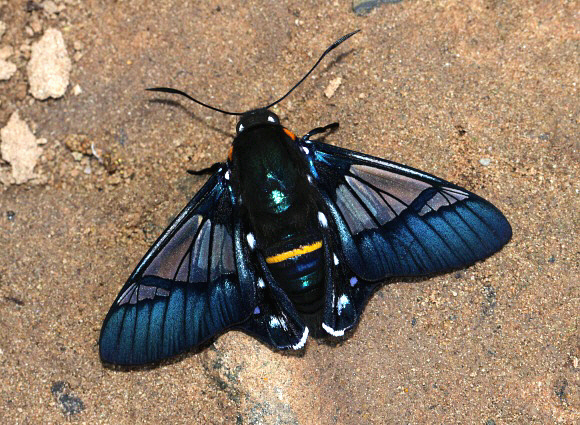
Introduction
The subfamily Pyrrhopyginae comprises 163 species, most of which are confined to the Neotropics, although a few occur in Mexico, and a single species Apyrrothrix araxes reaches Arizona.
The Pyrrhopyginae are characterised by having a massive muscular thorax and a conical abdomen with compressed segments. The wings of most species are black, often with a metallic blue sheen, and are swept back, half covering the hindwings when the butterflies settle.
There are 3 Oxynetra species – hopfferi which is distributed from Mexico to Panama; confusa which occurs in Venezuela, Guyana, Ecuador, Peru and Bolivia; and semihyalina. All have broad hyaline bands extending across both wings, and one or more yellow or reddish bands around the abdomen.
Oxynetra semihyalina is found on the eastern slopes of the Andes, from Colombia to Bolivia.
Habitats
This species occurs in the Andean foothills, at altitudes between about 300-900m. It is invariably found in the vicinity of streams.
Lifecycle
I have no data regarding semihyalina. The larvae of hopfferi are banded alternately in black and cream. They live within leaf-shelters, and feed on Prunus. The pupa is formed within the final larval leaf shelter. It is waxy-white, with black dots on the head and abdomen, and has orange markings along the sides.
Adult behaviour
Males of semihyalina are occasionally seen on the ground imbibing mineralised moisture from damp sand, usually in full sunlight. When settled they usually hold their wings fully outspread.
